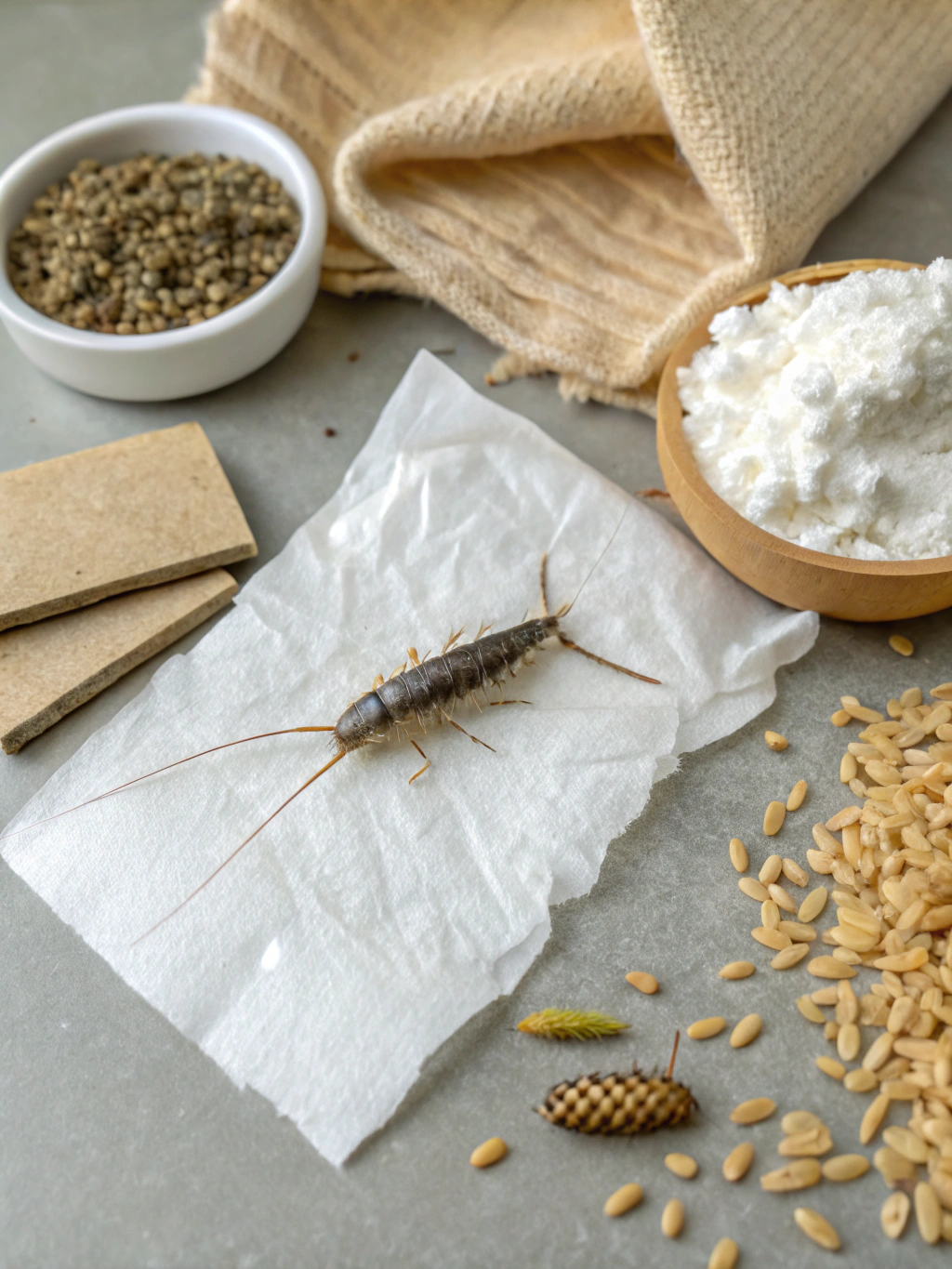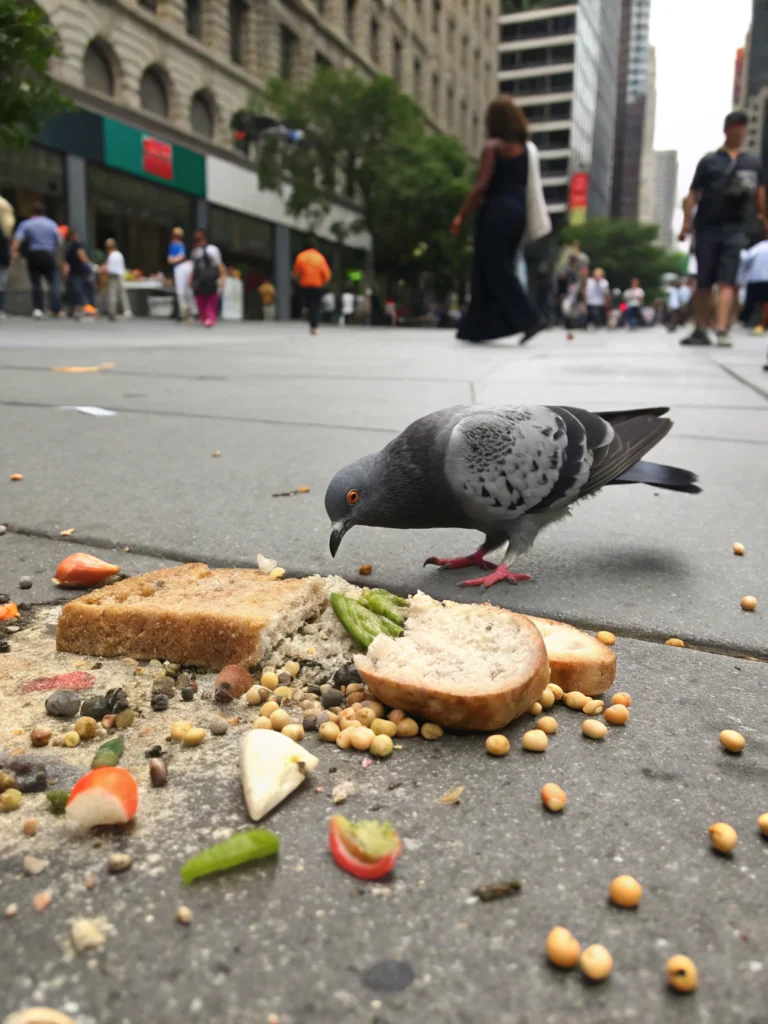What Do Silverfish Eat in Your House & How to Repel Them
Table of Contents
Introduction
Ever found mysterious holes in your books or noticed tiny silver insects scurrying away when you turn on the bathroom light? Those elusive, metallic-looking creatures are silverfish, and they’re probably feasting on more items in your home than you realize. Many homeowners mistakenly believe these prehistoric-looking pests only eat paper and books, but what do silverfish eat encompasses a surprisingly wide range of household items. From your pantry staples to the glue binding your photo albums, these resilient insects have survived for over 400 million years because of their adaptable silverfish diet. Let’s uncover what’s actually attracting these unwanted house guests and how to keep them away from your belongings.
Key Information Snapshot
• Silverfish primarily eat carbohydrates and proteins found in common household items
• They can survive up to a year without food (but need moisture)
• Primary food sources: starches, sugars, proteins, cellulose, and adhesives
• Preferred temperature: 70-85°F (21-29°C)
• Preferred humidity: 75-95%
• Lifespan: 2-8 years
• Most active: Nighttime
• Signs of infestation: Yellow stains, small holes, scales/droppings
Detailed Explanation
The Main Diet of Silverfish
Silverfish have survived since prehistoric times thanks to their incredibly diverse diet. These resilient insects primarily consume carbohydrates, proteins, and sugars found throughout your home. Their scientific name, Lepisma saccharina, even references their love for sugar (“saccharina”).
The what do silverfish eat list is extensive, but most items fall into these categories:
Paper Products They Consume
Silverfish are notorious for their appetite for paper-based items. They don’t actually eat the paper itself but rather the starches, glues, and sizing agents used in paper production. Common targets include:
- Books and magazines
- Wallpaper (especially the paste behind it)
- Photographs and photo albums
- Important documents and certificates
- Cardboard boxes and packaging
- Postage stamps and envelopes
One book left in a damp environment can feed a silverfish for months.
Food Items in Your Pantry
Your kitchen and pantry offer a feast for these nocturnal insects. Their silverfish diet often includes:
- Flour, oats, and other grains
- Sugar, especially powdered varieties
- Coffee and tea
- Dried fruits and vegetables
- Cereals and pasta
- Protein powders
- Pet food
Household Textiles and Personal Items
Beyond paper and food, silverfish also consume:
- Natural fibers like cotton, silk, and linen
- Dead skin cells
- Dandruff
- Hair (both human and pet)
- Dried body fluids
- Shampoos and other toiletries containing starches
Surprising Items Silverfish Target
These seven household items are frequently overlooked silverfish targets:
- Bookbinding glue and book covers
- The sizing in glossy paper or magazine pages
- Laundry starch and fabric sizing
- Insulation materials containing cellulose
- Artificial sweeteners
- Cosmetics with starch components
- Wallpaper adhesives (a favorite feast)
Related Facts or Tips
Tip: Store books in dry environments with good air circulation to prevent silverfish damage.
Did you know? Silverfish can live their entire lives inside your home without ever going outside, as long as they have access to food and moisture.
Tip: Vacuum bookshelves regularly, focusing on cracks and crevices where silverfish hide.
Did you know? Silverfish are among the oldest insects on Earth, with fossils dating back 400 million years!
Tip: Use airtight containers for storing dry foods like flour, sugar, and cereals to eliminate food access.
Common Questions (FAQs)
Do silverfish eat clothes?
Yes, silverfish eat clothes—particularly items made from natural fibers like cotton, linen, and silk. They’re attracted to the starches and sizing agents used in fabric manufacturing. Look for irregular holes or yellow staining as signs of silverfish damage.
How can I repel silverfish naturally?
Effective natural silverfish repellents include cedar oil, citrus peels, cinnamon sticks, and diatomaceous earth. Place these in areas where silverfish are common. Lavender and cedar sachets work well for protecting clothing and linens.
Can silverfish damage electronics?
While silverfish don’t typically eat electronic components, they may damage paper manuals, cardboard packaging, or insulation around wires. In rare cases, they can get inside devices seeking warmth and moisture, potentially causing shorts if crushed.
How long can silverfish live without food?
Silverfish can survive up to a year without food as long as they have access to water. This remarkable survival ability makes complete elimination challenging, as they can wait out temporary food shortages.
Practical Applications
Effective Silverfish Prevention Strategies
Reduce humidity: Use dehumidifiers in damp areas like basements and bathrooms to maintain humidity below 50%.
Seal entry points: Caulk cracks around pipes, baseboards, and windows where silverfish can enter.
Proper storage: Store books, papers, and clothing in sealed plastic containers rather than cardboard boxes.
Regular cleaning: Vacuum frequently, especially in dark corners, under furniture, and around bookshelves.
Food storage: Keep pantry items in airtight glass or hard plastic containers rather than paper or cardboard packaging.
Mistakes to Avoid
Common Errors When Dealing With Silverfish
Ignoring humidity: Simply killing visible silverfish without addressing moisture issues won’t solve the problem.
Improper food storage: Leaving paper bags of flour or sugar in pantries provides easy silverfish access.
Cluttered spaces: Allowing paper piles, book stacks, or magazine collections to accumulate creates ideal silverfish habitats.
Overlooking bathroom products: Forgetting that toiletries containing starches attract silverfish.
Reactive instead of preventive: Waiting until damage is visible before taking action allows infestations to establish.
Conclusion
Understanding what do silverfish eat is your first defense in protecting your home from these ancient pests. By eliminating their food sources, reducing humidity, and implementing proper storage techniques, you can make your environment less hospitable to these resilient insects. Remember that consistency is key—silverfish can survive long periods without food, so maintaining preventive measures is essential for long-term control. Have you spotted these silver speedsters in your home? Try implementing these strategies and share your results in the comments below!






